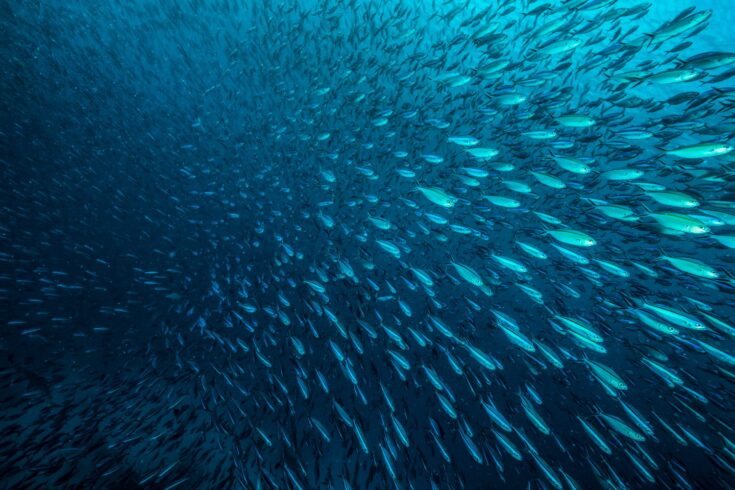Around the globe, there’s a growing awareness of the importance of the seas for all life on our planet. And if we are to protect the marine environment accurate monitoring and prediction of its behaviour is crucial, we cannot manage what we do not observe.
In Europe, the Copernicus Marine Service (CMEMS) makes sea data available to policymakers, scientists and the wider public. Data which can lead to good, evidence-based decisions regarding the marine environment.
Room for improvement
CMEMS has been running since 2014, but there was room for improvement. Aiming to expand its capabilities radically is the Horizon Europe NECCTON (New Copernicus Capability for Trophic Ocean Networks) project.
The European marine science community isn’t a large one, and UK organisations play a central role in it. Dr Jim Clark, Senior Scientist at the Plymouth Marine Laboratory (PML), explains:
We led the original consortium for the NECCTON project, which included all the European marine monitoring and forecasting centres. Since the project started, we’ve been working on transforming the data that CMEMS can provide and expanding its capabilities into new areas. All this is being done with a view to providing better support for marine biodiversity conservation, food-security management and policy-making.
Developing new models
PML is leading on the development of new ways of modelling the biological, geological and chemical changes that can affect sea life. Jim Clark says:
Making direct observations of the oceans is very expensive. Taking ships out to sea has both an economic and an environmental cost. Numerical modelling, combined with satellite observations as well as observations made at sea, can help to fill the gaps. It’s not a perfect representation of reality, but by using techniques such as data assimilation, we try to create the best possible description of the marine environment.
Keeping it in the family
The other UK partner that is central to NECCTON is the Met Office, which provides day-in, day-out forecasting capability at scale. Dr Andrew Saulter leads the Met Office’s Ocean Forecasting Research and Development team. For Andrew, the importance of NECCTON is that it will incorporate the latest developments in marine ecosystem monitoring and prediction science into operational forecasting systems:
There’s a big push from the EU to take the tools that can monitor this kind of ecosystem, which are cutting-edge science, to the point where they are mature, and useful for non-scientists.
Once operational, the new data from CMEMS should help to improve the management of fish stocks, for example. It will show where we need to tackle deoxygenation of sea water, or where polluted run-off from the land is a particular problem. It can also be used to help improve carbon budget estimates and identify areas that are likely to be impacted by pollutants, such as mercury and marine plastics.
International collaborations
As Andrew Saulter points out:
Just as oceans don’t respect national boundaries, the way we develop our marine science is through international collaborations. There is a European family of marine prediction and biochemistry scientists. The family doesn’t work as well without the UK in it, and the UK benefits a lot from being in the family. So being able to stay connected in our work and continue those relationships, thanks to the Horizon Europe guarantee, is really important.
Top image: Credit: Global_Pics, iStock, Getty Images Plus via Getty Images

